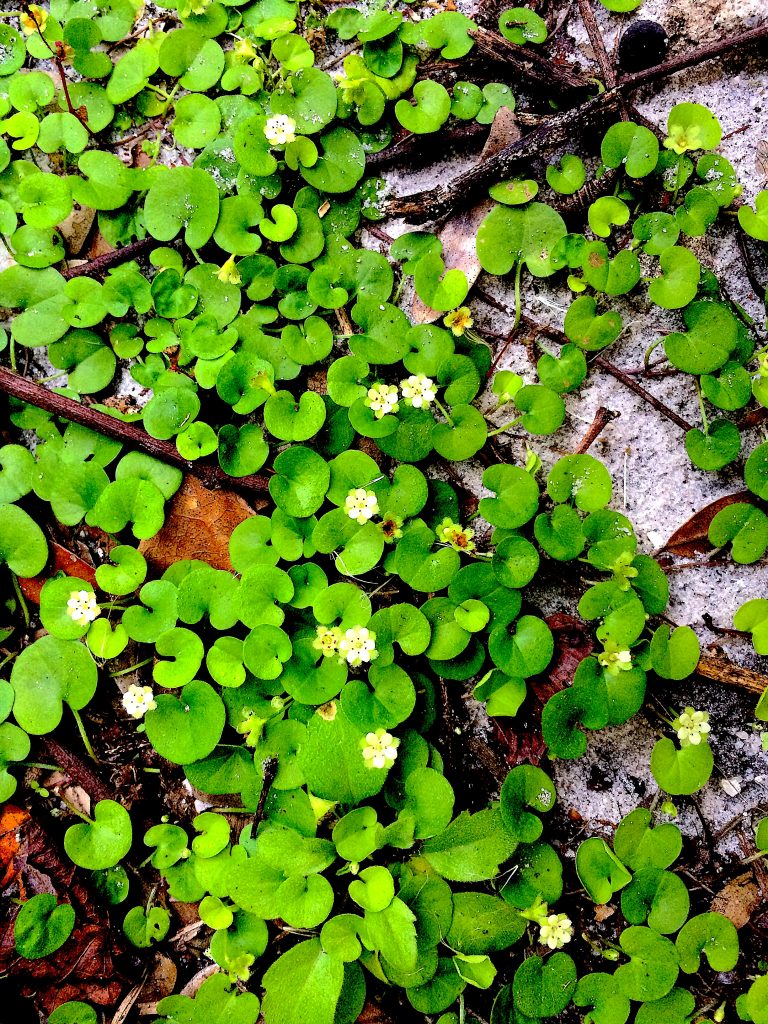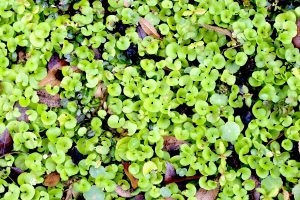
Pony Foot in blossom. Photo by Green Deane
Are they edible?
That is often asked about a little lawn plant called Pony Foot, or Dichondra carolinensis. I think they are bitter and medicinal, others toss them into salads. My herbalist friends call them a “liver tonic.” But, since they are bitter it is better to mix them with other greens — as one does chicory — rather than using them as the main ingredient.

Pony Foot might have antibacterial properties. Photo by Green Deane
This underfooter spreads by means of runners and they taste a lot better without the runners. The species is also used as a ground cover in shade. I’m not sure why the plants were called Dichrondra which means two hearts. Reni– or nephri— (meaning kidney shaped) would have been far better. Its leaves do alternate but they are far more kidney-shaped than heart-shaped. They are also have a slightly off-side funnel shape (a basal notch.) Usually dime-size I have seen them more than an inch across. Pony Foot is often found with two other edibles, Dollarweed, which has a stem attached to the middle of the leaf, and Gotu Kola which has a spade-shaped leaf but rounded teeth on the margin and the stem is hairier.
A 1905 report suggested that Pony Foot extract with glycerine was good against bacteria associated with diphtheria.
Green Deane’s Itemized Plant Profile
IDENTIFICATION: Low-growing, leafs dime to half dollar size, kidney-shaped with the stem forming a slight funnel indentation on one side, blossoms white
TIME OF YEAR: All year in the warmer areas of its range, spring to fall in the cooler climes.
ENVIRONMENT: Lawns or under spreading trees. Likes open areas or near water .
METHOD OF PREPARATION: Edible raw, can be cooked, as a tea (dried and concentrated) is said to be medicinal.

